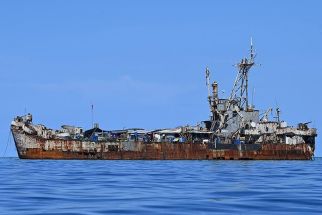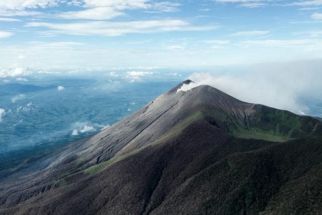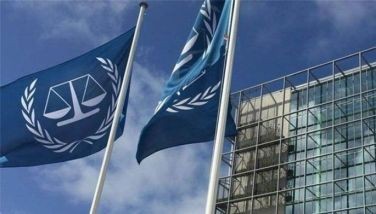Reyes seeks regional pact to protect East Asia seas
December 18, 2006 | 12:00am
Environment Secretary Angelo Reyes has called for a regional agreement to protect the seas in East Asia.
Speaking before the Second Ministerial Forum on the Implementation of the Sustainable Development Strategy for the Seas of East Asia in Haikou, China, Reyes underscored the need to ensure the sustainable development and environmental protection of East Asia’s seas for future generations.
"The only way to sustain the achievements gained under the Program for the Seas of East Asia (PEMSEA) is to transform the program into a regional mechanism under a partnership arrangement," he said.
"This arrangement will now serve to achieve the common goal of managing the seas for present and future generations."
East Asia region covers China, Mongolia, Japan, North and South Korea, Taiwan and Southeast Asia, including the Philippines.
Reyes said the Philippines has been able to adopt an integrated approach to coastal management based on the PEMSEA regional program.
"Significantly, we have today already replicated the lessons we learned from the Batangas Bay integrated coastal management demonstration project and the Manila Bay environmental management project in two other provinces, namely, Bataan and Cavite," he said.
Reyes enumerated the various programs and strategies adopted by the Philippines to protect and enhance its coastal and marine ecosystems with the help of various international and regional institutions.
"Additionally, with the adoption of the Manila Bay coastal strategy and its operational plan, we are now in the process of establishing a Manila Bay Coordinating Council to oversee the implementation of this plan," he said.
"We are now integrating the management programs for Laguna de Bay, Pasig River and Manila Bay itself under the ‘twinning program’ which is a component of the sustainable development program of SEA (Seas of East Asia."
Reyes said under the Integrated Coastal Management (ICM) program, the Philippines has strengthened its capacity to manage coastal area through cooperation between the private sector and local government units.
A public-private sector partnership is addressing the country’s sewage and coastal water quality problem, especially in tourist areas like Puerto Galera in Mindoro Oriental, he added.
Reyes said the Philippines would continue to host the regional program office and provide the necessary administrative and technical support for its operations.
The Philippines recognizes the contribution of PEMSEA to the enhancement of the Philippine coastal environment, he added.
The Philippines has been regarded as having one of the richest ecosystems in the world.
However, the country is facing a host of ecological problems that threatens its vast resources, including coastal and marine ecosystems, due to various human activities.
To date, the DENR said that only five percent of the country’s coral reefs remain in excellent condition, as about 70 percent of the country’s mangrove areas have been converted for aquaculture or logged and reclaimed for industrial settlement areas.
Half of the country’s sea grasses have been lost while many beaches and coastal areas have become polluted and heavily silted due to pressures from rapid population growth and uncontrolled development, the DENR added.
Speaking before the Second Ministerial Forum on the Implementation of the Sustainable Development Strategy for the Seas of East Asia in Haikou, China, Reyes underscored the need to ensure the sustainable development and environmental protection of East Asia’s seas for future generations.
"The only way to sustain the achievements gained under the Program for the Seas of East Asia (PEMSEA) is to transform the program into a regional mechanism under a partnership arrangement," he said.
"This arrangement will now serve to achieve the common goal of managing the seas for present and future generations."
East Asia region covers China, Mongolia, Japan, North and South Korea, Taiwan and Southeast Asia, including the Philippines.
Reyes said the Philippines has been able to adopt an integrated approach to coastal management based on the PEMSEA regional program.
"Significantly, we have today already replicated the lessons we learned from the Batangas Bay integrated coastal management demonstration project and the Manila Bay environmental management project in two other provinces, namely, Bataan and Cavite," he said.
Reyes enumerated the various programs and strategies adopted by the Philippines to protect and enhance its coastal and marine ecosystems with the help of various international and regional institutions.
"Additionally, with the adoption of the Manila Bay coastal strategy and its operational plan, we are now in the process of establishing a Manila Bay Coordinating Council to oversee the implementation of this plan," he said.
"We are now integrating the management programs for Laguna de Bay, Pasig River and Manila Bay itself under the ‘twinning program’ which is a component of the sustainable development program of SEA (Seas of East Asia."
Reyes said under the Integrated Coastal Management (ICM) program, the Philippines has strengthened its capacity to manage coastal area through cooperation between the private sector and local government units.
A public-private sector partnership is addressing the country’s sewage and coastal water quality problem, especially in tourist areas like Puerto Galera in Mindoro Oriental, he added.
Reyes said the Philippines would continue to host the regional program office and provide the necessary administrative and technical support for its operations.
The Philippines recognizes the contribution of PEMSEA to the enhancement of the Philippine coastal environment, he added.
The Philippines has been regarded as having one of the richest ecosystems in the world.
However, the country is facing a host of ecological problems that threatens its vast resources, including coastal and marine ecosystems, due to various human activities.
To date, the DENR said that only five percent of the country’s coral reefs remain in excellent condition, as about 70 percent of the country’s mangrove areas have been converted for aquaculture or logged and reclaimed for industrial settlement areas.
Half of the country’s sea grasses have been lost while many beaches and coastal areas have become polluted and heavily silted due to pressures from rapid population growth and uncontrolled development, the DENR added.
BrandSpace Articles
<
>
- Latest
- Trending
Trending
Latest
Trending
Latest
Recommended
January 25, 2025 - 12:00am



























